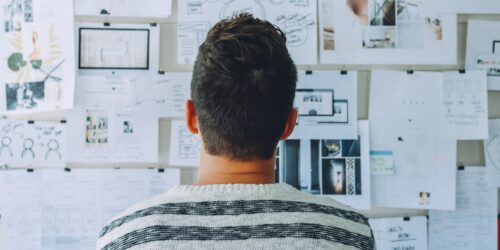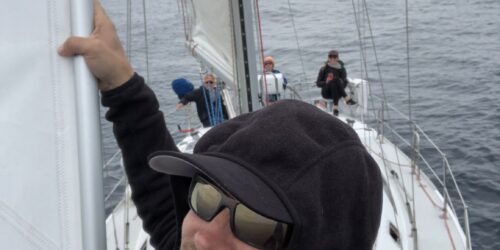Balance is the Next Great Differentiator

Many of us, at one time or another, have attempted to define the “intangible physical qualities” of an elite athlete only to land on the subjective reference of “grace.” Or, on the other end of the spectrum, I commonly hear from people who tell me they were “born stumbling and still are to this day.” In the eighteen months since we launched FluidStance®—a company with a mission to instill balance through movement in the workplace—I have heard it all, but the most common thread in all of the interactions with skeptics is that “balance” is reserved for the gifted. In this single statement, I can see these individuals have built their own false foundations and are ready to tumble on their next falter. Ironically, it is their own core limiting belief—that in their inability to find balance—that is sure to take them down.
It is time to embrace the concept of balance as a choice, not a defined sentence from birth, kindergarten, or employment.
Admitting you have no balance is the same as saying that you are too lazy to prioritize your own personal needs. Balance is a choice in the present, not in the past or future. When a toddler is learning to walk, balance improves the body’s ability to perform: the better a toddler’s balance, the larger their domain. The same is true for us adults. And considering that balance is a “use it or lose it” attribute, it is important to incorporate balance into our daily routines.
So what am I talking about? Physical, emotional, or work-life balance? The answer is simple: yes.
I have recently been given the opportunity to train in the elite training facility The Lab, which is the sister gym to the Peak Performance Project (P3) Training Center and Research facility in Santa Barbara, California. P3 and The Lab train some of the world’s best athletes through a biomechanical driven system based on correcting imbalances in our body for better performance. Just like the thousands of people who walk into one of FluidStance’s tradeshow booths, I walked into P3 defeated—having given into the strangle of aging and injury, burdened over time by my professional responsibilities and the demands of fatherhood.
As I was interviewed by the The Lab’s team, I began to listen to the spaces between my words: I was admitting I had lost my balance. I—the founder of FluidStance, a company dedicated to the sole purpose of instilling balance through movement—I had no balance. No time, no confidence, and, most importantly, a bunch of excuses for why I had fallen.
The Lab’s team made me lean into the areas where I was weak in the following weeks—essentially putting me in places or exercises embracing my imbalances. I rediscovered the way that, when we push the edges of where we feel balance, we widen our core foundation—incrementally increasing our sweet spot of physical strength, emotional happiness, and personal freedom.
Where do you push your imbalances? Chairs, built to keep us comfortably balanced, allow us to conquer the work at hand, but in the end they cut off our circulation; GPS has removed 99.9% of our chance of getting lost, but also any chance of wandering—where a trip becomes an adventure; and the great American dream of a house and picket fence just gave us additional places to put more stuff and increase the demand to make more money.
In a recent blog article by Randi Zuckerberg, she said that of life’s big 5 (Family, Fitness, Friends, Work, and Sleep), you can only invest in three to be successful. Except in baseball and venture capitalism, 3 out 5 (60%) is just above failing (D- at best), right? Have we gotten to point where we have accepted failure, where 3 out of 5 is good enough? If this formula were used to build a wheel, it would be a rough ride. This cultural norm is, in fact, a short-term limiting belief that makes us feel better inside the pain of being out of balance.
Balance is a choice: a choice to define what success looks like. A choice to make a 30-hour work week more efficient than a 50-hour one. A choice to invest in your own personal vehicle—your body—rather than your next fancy car, or a choice to invest time in your child’s daily life rather than playing catch-up in their teenage years. It is time to press where you are comfortably numb and be present in the pain that forces you to find real balance, not a superficial one.
The Lab’s training staff has not made my return to physical balance a major life change: they started with the little muscles that allow the big ones to perform better. Just imagine what success will look like when the body moves in harmony rather than forcing big muscles to perform inefficiently. Hmmm, I wonder where else we spend time pounding through the day rather than moving through life with grace?
Balance creates success over the long haul, where the great ones are found…in body, mind, and achievement.






